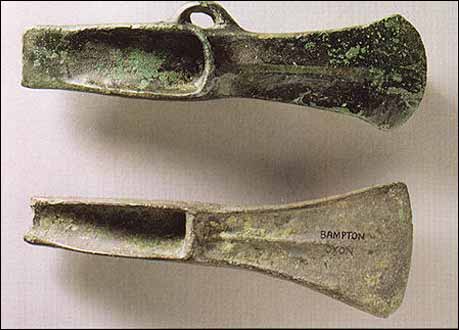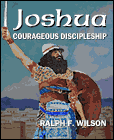Free E-Mail
Bible Studies
Beginning the Journey (for new Christians). en Español
Old Testament
Abraham
Jacob
Moses
Joshua
Gideon
David, Life of
Elijah
Psalms
Solomon
Songs of Ascent (Ps 120-135)
Isaiah
Advent/Messianic Scriptures
Daniel
Rebuild & Renew: Post-Exilic Books
Gospels
Christmas Incarnation
(Mt, Lk)
Sermon on the Mount
(Mt 5-7)
Mark
Luke's
Gospel
John's Gospel
7 Last Words of Christ
Parables
Jesus and the Kingdom
Resurrection
Apostle Peter
Acts
The Early Church
(Acts 1-12)
Apostle Paul
(Acts 12-28)
Paul's Epistles
Christ Powered Life (Rom 5-8)
1 Corinthians
2 Corinthians
Galatians
Ephesians
Vision for Church
(Eph)
Philippians
Colossians,
Philemon
1
& 2 Thessalonians
1 & 2 Timothy,
Titus
General Epistles
Hebrews
James
1 Peter
2 Peter, Jude
1, 2, and 3 John
Revelation
Revelation
Conquering Lamb of Revelation
Topical
Glorious Kingdom, The
Grace
Great Prayers
Holy Spirit, Disciple's Guide
Humility
Lamb of God
Listening for God's Voice
Lord's Supper
Names of God
Names of Jesus
Christian Art
About Us
Podcasts
Contact Us
Dr. Wilson's Books
Donations
Watercolors
Sitemap
 A complete Bronze Age sword (top) with hilt and leaf-shaped blade (c.1100BC), and a large bronze spearhead (bottom) from 700BC. |
We're used to guns, such as rifles and automatic weapons -- at least on television. But warfare in the Late Bronze Age was mostly hand to hand, with some use of longer range weapons such as bows and arrows, slings and stones. Fighting was a pretty dangerous, personal, and bloody business. These are some of the weapons:
Club. Often made from a single piece of wood, usually larger at the striking end. It could break bones and shatter skulls. A variation (though probably not used in Joshua's period) was the mace, a hand-held stick with a stone attached to the striking end.
 These Bronze Age socketed axes were used as both domestic tools and close-quarter combat weapons. |
Battle Axe. Probably in this period they would have a bronze or copper blade attached to a wooden handle.
Spear. A sharp blade was attached to the end of a stick, a hand-held stabbing weapon. The spear was used by defenders of besieged cities to keep shock troops at bay when they tried to scale the wall by ladders. (Numbers 25:7-8; Judges 5:8)
Sword. Used chiefly as a stabbing instrument. This was the most important weapon in Canaan, mentioned 400 times in the Old Testament. The sword probably developed along with the advance of metallurgy. Swords and daggers were made of copper. While iron didn't generally appear in weapons until about 1200 BC in the area, iron and even steel swords are known much earlier on a limited basis.
Sickle Sword. The curved shape and sharp cutting edge were used for striking or hacking a foe rather than for stabbing, functioning somewhat like a battle axe but easier to handle. This was probably used by the Israelites during the Conquest, since we read much about "smiting with the edge of the sword" (Joshua 10:28, 30, 32, 37). Specimens of this type of sword have been discovered in Canaanite sites of the Late Bronze Age.
 Sickle sword, 1307-1275BC, from the Middle Assyrian period (the reign of Adad-nirari I). |
Bow and Arrow. This was a second widely used weapon in Joshua's army.
"I sent the hornet ahead of you, which drove them out before you -- also the two Amorite kings. You did not do it with your own sword and bow." (Joshua 24:12)
Bows were of two types. The self-bow was made of a single piece of wood. The composite bow was more powerful, and was made of laminated wood, horn, and sinew. The composite bow had an effective range of 500 to 550 feet (160-175 meters). Arrows were made of feather fletching, a shaft of a reed or some sort of wood, and flint, copper, bronze, and, later, iron tips.
Sling and Stone. This was made of inexpensive materials and was a significant part of Israel's arsenal. The sling could be made of woven materials, such as wool or palm fiber rope, or of leather. Excavations in Israel, especially around fortification systems, usually reveal hundreds of sling stones. Stones were often worked to make them as round as possible, and they range from 2 to 3 inches (5 to 7.5 cm.) in diameter. Stones could be flung by a warrior at 100 to 150 miles per hour (160 to 240 km/hr).
Shield. There were two types of shields. The small round or rectangular shield used in hand-to-hand combat, and a long, full-length shield used by besiegers as they approached a city wall, so archers could fire arrows and still be protected. Shields for the typical soldier were probably made of leather stretched over a wood frame, and maintained by oiling (2 Samuel 1:21).
Armor was probably not used by the Israelites during the Conquest, but high-ranking leaders had body armor by the time of Saul (1 Samuel 17:8).
Helmet. A helmet to protect the head was probably of leather or bronze, but is not mentioned in Joshua.

Lessons in book formats are available. |
Chariot. The Israelites did not have chariots in Joshua's day. The areas of the hill country where many of the tribes lived weren't conducive to chariots, which needed flat, open areas to be effective. The Canaanites (Philistines) along the coastal plain used iron chariots (Joshua 11:6, 9; Judges 1:19) that were a formidable obstacle to the complete conquest of the land.[71]
Endnote
[71] This section draws heavily on J.K. Hoffmeier, "Weapons of War," in ISBE 4:1033-1043; and T. Nicol, "Chariot," in ISBE 1:635-636.
Copyright © 2025, Ralph F. Wilson. <pastor![]() joyfulheart.com> All rights reserved. A single copy of this article is free. Do not put this on a website. See legal, copyright, and reprint information.
joyfulheart.com> All rights reserved. A single copy of this article is free. Do not put this on a website. See legal, copyright, and reprint information.
 |

|
In-depth Bible study books
You can purchase one of Dr. Wilson's complete Bible studies in PDF, Kindle, or paperback format -- currently 48 books in the JesusWalk Bible Study Series.
Old Testament
- Abraham, Faith of
- Jacob, Life of
- Moses the Reluctant Leader
- Joshua
- Gideon
- David, Life of
- Elijah
- Psalms
- Solomon
- Songs of Ascent (Psalms 120-134)
- Isaiah
- 28 Advent Scriptures (Messianic)
- Daniel
- Rebuild & Renew: Post-Exilic Books
Gospels
- Christmas Incarnation (Mt, Lk)
- Sermon on the Mount (Mt 5-7)
- Luke's Gospel
- John's Gospel
- Seven Last Words of Christ
- Parables
- Jesus and the Kingdom of God
- Resurrection and Easter Faith
- Apostle Peter
Acts
Pauline Epistles
- Romans 5-8 (Christ-Powered Life)
- 1 Corinthians
- 2 Corinthians
- Galatians
- Ephesians
- Philippians
- Colossians, Philemon
- 1 & 2 Thessalonians
- 1 &2 Timothy, Titus
General Epistles
Revelation
Topical

 To be notified about future articles, stories, and Bible studies, why don't you subscribe to our free newsletter, The Joyful Heart, by placing your e-mail address in the box below. We respect your
To be notified about future articles, stories, and Bible studies, why don't you subscribe to our free newsletter, The Joyful Heart, by placing your e-mail address in the box below. We respect your